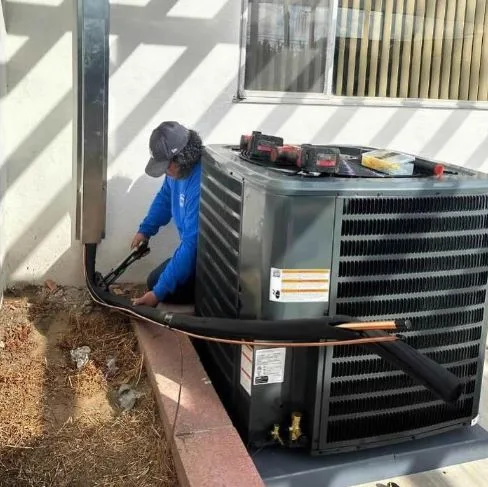How Cutting-Edge Drone Technology is Transforming Crop Monitoring in India
Drone-based spraying reduces time from 4 hours to just 5 minutes, cuts chemical waste, and boosts yield by 30-50%. This technology is changing how farmers manage their crops, offering a more efficient and sustainable approach.
For Indian farmers dealing with challenges like erratic weather and a shortage of labor, drones provide a groundbreaking solution. They help farmers make more informed decisions, reduce input costs, and increase productivity.
Gone are the days when only large farms had access to high-tech tools. Companies like Leher Farm Drones are making drone technology accessible to Indian farmers, transforming agricultural practices and paving the way for a more efficient future.
How Drones Are Used in Crop Monitoring?
Drones are becoming essential tools for crop monitoring, offering farmers efficient ways to assess the health of their crops across large areas. Here’s how they contribute to better crop management:
- Crop Health Monitoring: Drones equipped with advanced cameras capture infrared images to assess plant health and vitality. The NDVI (Normalized Difference Vegetation Index) helps identify stress in crops caused by pests, diseases, or nutrient deficiencies.
- Pest Detection: Drones can scan large areas in a short amount of time and identify early signs of pest infestations, giving farmers the opportunity to address the issue before it worsens.
- Water Stress Detection: By using thermal sensors, drones identify areas experiencing water stress, enabling farmers to adjust irrigation systems to ensure crops receive adequate water.
- Nutrient Management: Drones can pinpoint areas where crops need more nutrients. This allows farmers to apply fertilizers precisely where needed, improving crop growth and reducing unnecessary chemical use.
Drones provide real-time information, enabling farmers to address issues promptly, conserve resources, and improve crop yields.
While drones offer significant advantages for farmers, several challenges hinder their widespread use in India. Key obstacles include:
- High Initial Cost: The cost of purchasing drones can be too high for many small-scale farmers. Despite government subsidies and financing options, the high cost still presents a major challenge for farmers working with tight budgets.
- Lack of Technical Skills: Operating drones requires specialized skills and knowledge, which many farmers, particularly those in rural areas, may lack. Although training programs exist, the gap in education and awareness hinders the widespread adoption of drone technology.
- Regulatory Challenges: In India, operating drones requires following strict regulations, such as securing permits and complying with airspace restrictions. These rules can be complicated for farmers to navigate, particularly those unfamiliar with the regulatory landscape.
- Infrastructure Issues: In remote areas, limited access to reliable internet and communication networks can hinder farmers’ ability to fully utilize drones. Stable connectivity is crucial for data transmission, and inadequate infrastructure can significantly reduce the effectiveness of drone use.
- Maintenance and Repair: Drones require regular upkeep and occasional repairs. In rural regions, finding spare parts or repair services can be challenging, resulting in downtime and increased expenses.
Despite these challenges, drone technology still holds great potential to transform Indian agriculture. With continued government support and technological progress, these challenges are likely to diminish over time.
Overcoming Challenges in Drone Adoption in Indian Agriculture
Despite the numerous advantages of drone technology, farmers face several challenges when adopting it. Nevertheless, with the right approach and support, these challenges can be addressed effectively.
- High initial cost: The upfront cost of drones remains a significant barrier, especially for small-scale farmers. However, platforms like Leher are helping reduce this barrier by offering drone services at affordable rates and providing farmers with flexible pricing options. This makes it easier for farmers to access drone-powered services without having to make significant initial investments.
- Lack of technical skills: Operating drones requires specific technical knowledge, and many farmers lack the necessary expertise. To address this, initiatives such as Leher’s training programs for drone operators and farmers help equip rural communities with the required skills. Leher also offers customer support and guidance to ensure that farmers can effectively use drone technology.
- Regulatory hurdles: Understanding the regulations for drone use can be challenging, particularly in rural areas where farmers may not be familiar with the rules. Companies like Leher simplify the process by ensuring compliance with the required regulations, allowing farmers to focus on their crops rather than on the legalities of drone operations.
- Infrastructure limitations: In remote regions, poor internet connectivity can hinder the effective use of drone technology. However, Leher Farm Drones come with easy-to-use mobile apps for service booking and real-time updates, even in areas with limited connectivity.
- Maintenance and Repair: Drones require regular maintenance and occasional repairs, which can be particularly challenging in rural areas. Leher Farm Drones addresses this by offering technical support and a network of certified drone operators, ensuring that drones remain operational and continue to serve farmers efficiently.
Conclusion
Drone technology is reshaping Indian agriculture by improving crop monitoring, cutting costs, and increasing yields. With the support of government initiatives and ongoing technological advancements, drones are becoming increasingly accessible to farmers across the country.
As farming moves towards data-driven methods, drones will be key in boosting productivity and promoting sustainability. Leher Farm Drones, with their precision spraying services, are leading this shift, helping farmers improve practices, reduce chemical waste, and enhance yields.





